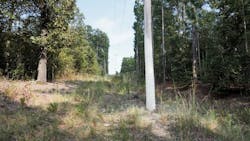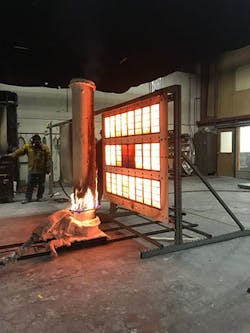There are several Passive Fire Protection (PFP) products being evaluated by utilities to reinforce power line infrastructure in fire prone regions like California and Australia. Although there is no guaranteed method for protecting the millions of miles of power lines from fires, solutions like fire resistive coatings and wraps serve as an opportunity to prevent wooden poles from being weakened, toppled, or burnt away completely in the event of a fire.
Treating poles with PFP solutions can lower the risk of ignition for poles, but not all methods are created equal and some perform differently than others. The first priority when evaluating these solutions should be to maintain the benefits of the wood pole and ensure the selected method is not introducing additional moisture over time. One of the major benefits of wood poles is that they are easier to service than their competing alternatives - the fire protection treament should not prevent line crews from climbing or installing new equipment. To prevent rotting and premature replacement, the long-term application of fire resistive treatments should allow poles to release water naturally. Coatings that require a heavy covering (more than 30 wet mils during application) can trap moisture and lead to rot. Sheet style wraps that are generally used during an emergency or active fire should be removed soon after the threat of the fire has passed to prevent moisture trapping.
Without industry guidelines, it can be challenging to compare the performance of the many fire resistive products available. Suppliers of these wraps and coatings are validating the performance of fire resistant products by using standard flame spread tests, and the recently drafted ASTM method for flame resistance of wooden utility poles. This test lasts a total of 10 minutes using multiple styles of heat sources. During the first five minutes a treated pole is exposed to a radiant panel at 1650 ̊F (900 ̊C), and a ring burner is ignited in addition to the use of the panel for the remaining five minutes. After 10 minutes, both heat sources are removed and the pole is then exposed to simulated wind to ensure the pole does not reignite.
Hubbell recently introduced Fire Protection Coating, or FPC. This coating is a latex based, intumescent intended for protecting wooden utility poles from fire. The coating can be easily applied with a brush, roller or airless sprayer (recommended) to preserve the structural integrity of power lines in the event of a fire. In addition to standard flame spread tests and screening using ASTM E119, FPC was also tested to the ASTM proposed method for wooden utility poles and demonstrated excellent performance.
Sponsored by:


